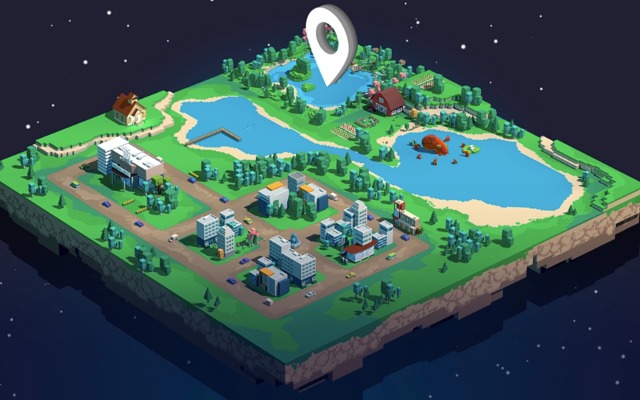The cost of real estate has increased considerably in several Canadian cities. In the next few years, land acquisition costs could also explode in various virtual worlds.
One of the most discussed phenomena since 2021 is the metaverse, these interconnected virtual universes where one can live various immersive experiences.
The creation of virtual universes is still in its infancy. We are still far from what many see as the real metaverse, a set of interconnected worlds between which it is easy to move and transfer one’s possessions. Nevertheless, the idea is already appealing to many people and organizations.
Several companies have already announced that they have invested in acquiring virtual locations in some of these worlds. The purchase of virtual locations is not new. However, the isolation caused by the pandemic, the rise in popularity of cryptocurrency and NFTs (non-fungible tokens), and the refinement of certain technologies seem to have helped create an even stronger craze for this type of investment.
Millions of dollars for virtual locations
Last November, investment firm Everyrealm (then called Republic Realm) acquired lots in The Sandbox virtual world. The transaction was valued at $4.3 million. That same month, Toronto-based Metaverse Group paid $2.5 million for land in the Decentraland fashion district. These investment firms hope that the growing popularity of these spaces will make them more valuable.
The sums paid by Eyerealm and Metaverse Group to acquire the land are eye-popping. But a host of other smaller purchases are taking place every day in the most popular virtual worlds, including The Sandbox and Decentraland. As in the real world, location and lot size are important determinants of the price paid. The number of lots is also limited.
These investments are obviously risky. In fact, we don’t know what the real appeal of the metaverse will be or even if it will materialize in the way we imagine it today.
An opportunity for advertisers
Despite the risks and a still unclear idea of the real potential, well-known companies are investing money and effort. This is the case for the firm PwC, for example, or Adidas. Other players, such as Nike, have already launched initiatives such as Nikeland, a space that serves as a virtual showroom and gaming area.
It remains to be seen how brands will use their virtual spaces. Whether it’s a sales platform for real or virtual products, a social space for immersive experiences… the possibilities are endless.
Whether it’s PwC, Nike or Adidas, it’s important to keep in mind that each of these firms has large marketing budgets. The amounts invested in the metaverse represent only a fraction of these. We can see the sums spent by these companies as an investment in research and development, or at the very least, as a publicity stunt to show their interest in a futuristic concept in vogue.
The craze for real estate in the metaverse is real. However, the fruits of this will not be seen tomorrow morning. And even if the technology and infrastructure are there, consumers will have to see a real interest in it for it to become a reality.




